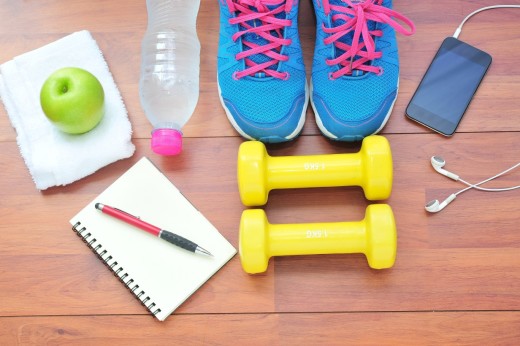
Ok so if you’re like me, you’ve used more than a few fitness apps over the years, with limited
success.
The thing is, that while data’s good, algorithms aren’t everything – if you’ve run 25 miles this week but aren’t feeling any benefits then what’s the point?
Amazon is well-known for using algorithms that predict what customers might buy to personalise the shopping experience and Netflix has also achieved success from applying the same technique to media streaming.
Can the same formula really be applied to something as personal as health and fitness? I’m not so sure.
You could probably learn to code by watching a few Youtube videos but it’s still not the same as having Bill Gates sitting by your side giving you personal guidance on your next line of javascript.
It’s the same with fitness apps, you’re more likely to see improvements by getting a little support now and then.
Here’s how to make fitness technology work for you (and your waistline!).
Seek professional advice
While traditional fitness apps are perfect for recording data and analysing performance, you’ll often fare better if you’re given daily guidance on how to reach your fitness goals.

A study by Stanford University found that people who received regular phone calls about physical activity with a fitness counselor were exercising significantly more six months later than people who received no calls. This is because fitness experts can help you get the most out of your workouts, meaning that you’re more likely to see improvements and more likely to want to continue exercising.
Fitness coaches can use your data to deliver insights and and a more in-depth analysis of your workout sessions. So, if you’re using an app or a wearable, seek professional advice on how to interpret the data and apply it to your exercise regime – data is useless unless you know how to use it!
Get regular support
Having goals is one thing, having the support to achieve them is another. Fitness apps, such as MyFitnessPal, Runkeeper and Sworkit, are great for counting calories, tracking runs and providing workout routines, but they don’t necessarily help you to achieve the long-term behavioural change you’re probably looking for.
Fitness programs generated by algorithms often fall short of their goal. A recent study by Endeavour Partners has shown that a third of US consumers who used a wearable fitness product stopped using it within six months of purchasing it.
And it’s not just those pesky wearables which aren’t delivering results. A Brigham Young University study of 127 exercise apps found that most apps only scored between one to 28 out of 100 when behavior change theory was analysed.

Apps don’t have a realistic social component – while they can track your workouts, they can’t possibly give answers to questions like ‘my calf feels a little tight, should I still go for a run?’
Human-to-human interaction, provides those who want to get fit with motivation that is much harder to achieve through technology alone. Find someone who can give you regular support.
Create a realistic training plan
If you’re always busy, staying fit and healthy can often be pushed aside at the expense of a challenging schedule. In today’s ‘always-on’ mindset things aren’t getting any easier as work and free-time become increasingly blurred. Yet, us business people have every reason to stay fit and healthy since the benefits of regular exercise have been shown to contribute to greater productivity and general happiness.

While there are more than 100,000 health apps to choose from, 30 percent being fitness apps, business professionals need tailor-made fitness programs to fit in with their busy lifestyles. In general, we want to be told what to do, when to do it and how to achieve it when it comes to fitness.
For business people who travel frequently, it is difficult to have regular access to the same personal trainer. While hotel gyms may provide an opportunity to stay fit while on the go, they are impersonal and lack the specialised advice and support that a personal trainer provides.
Create a realistic training plan – it is helpful to find a professional who understands your ambitions and your limitations. Work with a trainer to set out a plan which pushes you as far as you need to be pushed – but no further.
The future
The problem with a lot of self-improvement apps, fitness included, is that they normally give you a good foundation for improvement but you really need something else to really make it work for you.
I think we’re moving towards a future where apps will feature human-to-human interaction as a core functionality.
All technology can benefit from getting a bit more human.
Read next: Employees of 3 companies being offered the Apple Watch for $25 if they stay healthy
Get the TNW newsletter
Get the most important tech news in your inbox each week.




